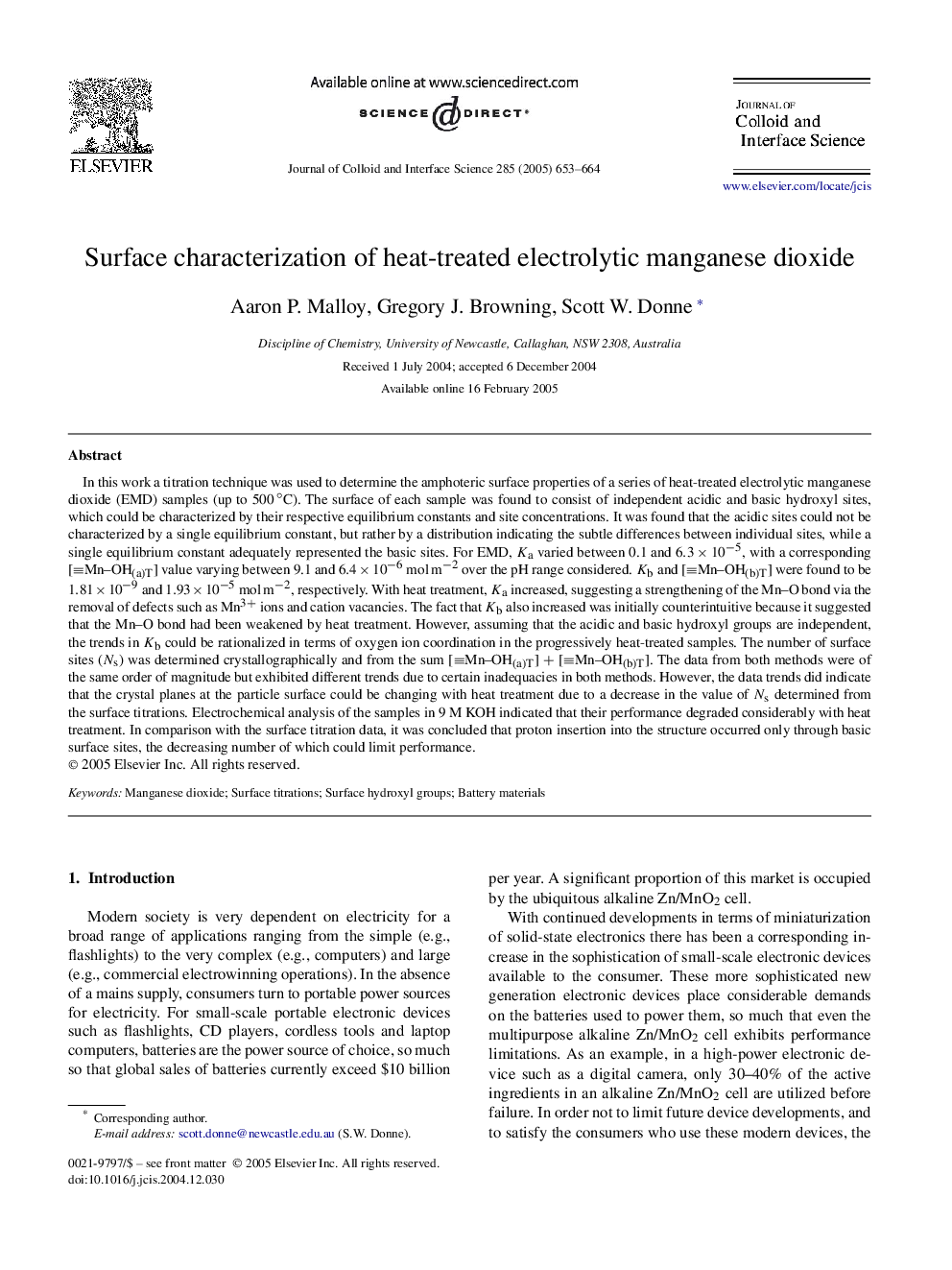| Article ID | Journal | Published Year | Pages | File Type |
|---|---|---|---|---|
| 10377921 | Journal of Colloid and Interface Science | 2005 | 12 Pages |
Abstract
In this work a titration technique was used to determine the amphoteric surface properties of a series of heat-treated electrolytic manganese dioxide (EMD) samples (up to 500â°C). The surface of each sample was found to consist of independent acidic and basic hydroxyl sites, which could be characterized by their respective equilibrium constants and site concentrations. It was found that the acidic sites could not be characterized by a single equilibrium constant, but rather by a distribution indicating the subtle differences between individual sites, while a single equilibrium constant adequately represented the basic sites. For EMD, Ka varied between 0.1 and 6.3Ã10â5, with a corresponding [MnOH(a)T] value varying between 9.1 and 6.4Ã10â6molâmâ2 over the pH range considered. Kb and [MnOH(b)T] were found to be 1.81Ã10â9 and 1.93Ã10â5molâmâ2, respectively. With heat treatment, Ka increased, suggesting a strengthening of the MnO bond via the removal of defects such as Mn3+ ions and cation vacancies. The fact that Kb also increased was initially counterintuitive because it suggested that the MnO bond had been weakened by heat treatment. However, assuming that the acidic and basic hydroxyl groups are independent, the trends in Kb could be rationalized in terms of oxygen ion coordination in the progressively heat-treated samples. The number of surface sites (Ns) was determined crystallographically and from the sum [MnOH(a)T] + [MnOH(b)T]. The data from both methods were of the same order of magnitude but exhibited different trends due to certain inadequacies in both methods. However, the data trends did indicate that the crystal planes at the particle surface could be changing with heat treatment due to a decrease in the value of Ns determined from the surface titrations. Electrochemical analysis of the samples in 9 M KOH indicated that their performance degraded considerably with heat treatment. In comparison with the surface titration data, it was concluded that proton insertion into the structure occurred only through basic surface sites, the decreasing number of which could limit performance.
Related Topics
Physical Sciences and Engineering
Chemical Engineering
Colloid and Surface Chemistry
Authors
Aaron P. Malloy, Gregory J. Browning, Scott W. Donne,
